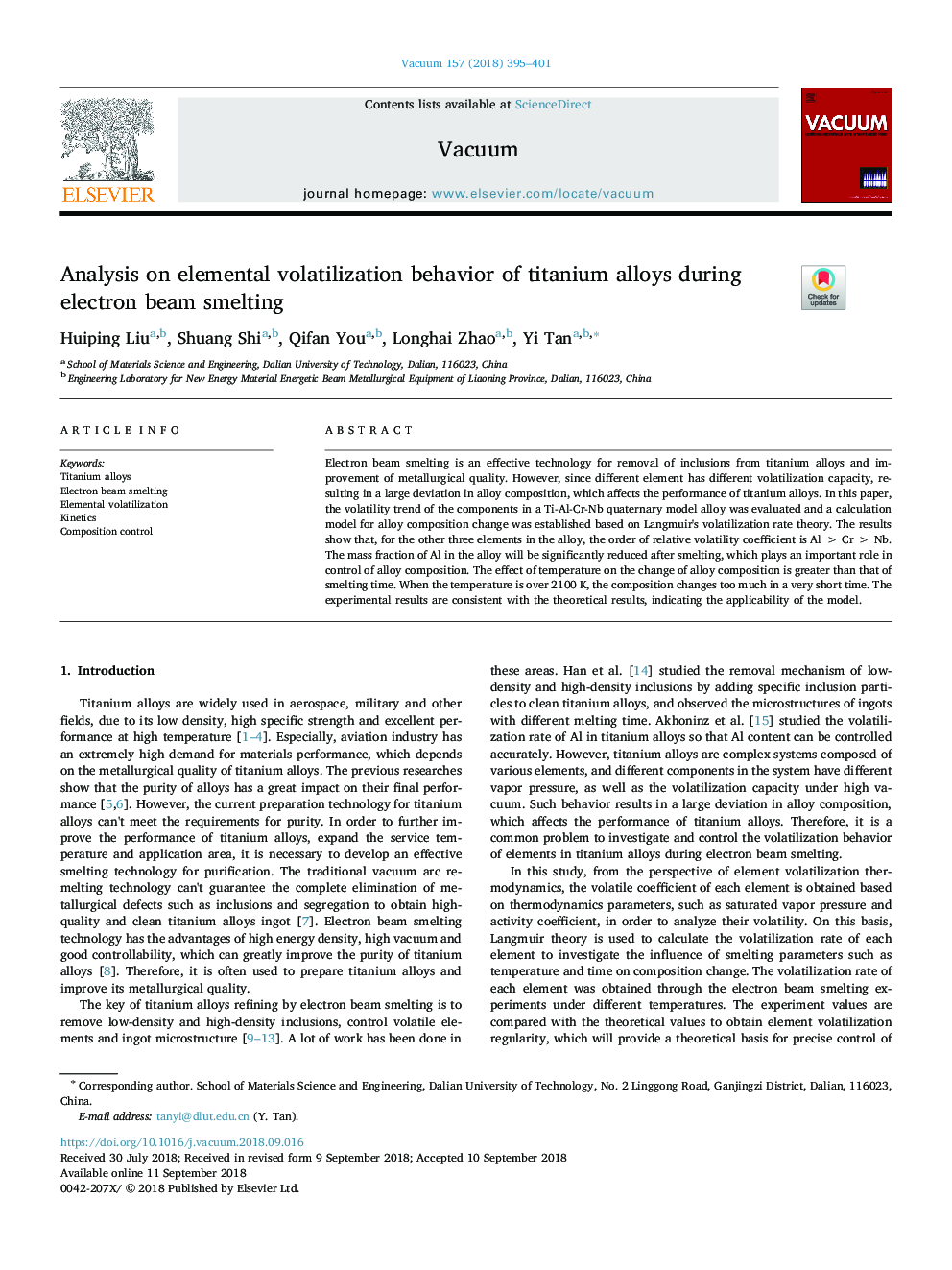| Article ID | Journal | Published Year | Pages | File Type |
|---|---|---|---|---|
| 10128829 | Vacuum | 2018 | 7 Pages |
Abstract
Electron beam smelting is an effective technology for removal of inclusions from titanium alloys and improvement of metallurgical quality. However, since different element has different volatilization capacity, resulting in a large deviation in alloy composition, which affects the performance of titanium alloys. In this paper, the volatility trend of the components in a Ti-Al-Cr-Nb quaternary model alloy was evaluated and a calculation model for alloy composition change was established based on Langmuir's volatilization rate theory. The results show that, for the other three elements in the alloy, the order of relative volatility coefficient is Alâ¯>â¯Crâ¯>â¯Nb. The mass fraction of Al in the alloy will be significantly reduced after smelting, which plays an important role in control of alloy composition. The effect of temperature on the change of alloy composition is greater than that of smelting time. When the temperature is over 2100â¯K, the composition changes too much in a very short time. The experimental results are consistent with the theoretical results, indicating the applicability of the model.
Related Topics
Physical Sciences and Engineering
Materials Science
Surfaces, Coatings and Films
Authors
Huiping Liu, Shuang Shi, Qifan You, Longhai Zhao, Yi Tan,
